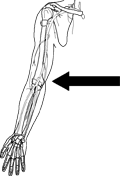Advanced Care Program: Diabetes
BLOOD PRESSURE CUFFS
 PURPOSE: Blood pressure monitors, or sphygmomanometers, allow the measurement of arterial blood pressure. These devices require qualified persons to operate accurately. The same devices your medical supplier sells are used in most health care facilities. When taking blood pressure, the user must pay particular attention to the proper technique mentioned below and in the manufacturers' instructions. Blood pressure is not a static measurement. Your blood pressure changes every minute of every day. Blood pressure normal ranges vary; always consult your medical doctor for normal ranges for your age, gender and health status.
PURPOSE: Blood pressure monitors, or sphygmomanometers, allow the measurement of arterial blood pressure. These devices require qualified persons to operate accurately. The same devices your medical supplier sells are used in most health care facilities. When taking blood pressure, the user must pay particular attention to the proper technique mentioned below and in the manufacturers' instructions. Blood pressure is not a static measurement. Your blood pressure changes every minute of every day. Blood pressure normal ranges vary; always consult your medical doctor for normal ranges for your age, gender and health status.
TYPES: There are many different brands and models. A quality unit has a warranty, usually at least two years, and comes in manual and automatic styles. The manual type requires the user to inflate and deflate a bulb, and listen for the measurements. Automatic models vary in their level of automatic performance. The most popular, and cost effective automatic models are semi-automatic. The user inflates and deflates the cuff and the monitor reads the blood pressure. There are more expensive models that will inflate, deflate, and measure the blood pressure.
USE: Since your blood pressure is always changing, it is necessary to stabilize your reading before measuring. The individual having their blood pressure taken must be relaxed and seated for a 10-15 minute period prior to measuring. Always allow at least 10 minutes between measurements.
 All blood pressure cuffs require the placement of a cuff or other measuring device over an artery. The best place to measure blood pressure is the brachial artery near the elbow. All cuffs have a mark designated for placement over the artery. The cuff should not be any smaller then half the length of the upper arm, nor any longer than two-thirds. Place the cuff on securely and fasten. Make sure the valve on the bulb is closed. Place your stethoscope over the artery and pump up to about 20-40 mmHg above the patient's normal systolic pressure. Some health care professionals advocate pumping up to 200 mmHg as a starting point. Start releasing the air in the cuff-slowly. You should not pay attention to the jerky nature of the needle on the gauge; always listen for your measurement. When you first hear the heartbeat that will be the systolic blood pressure. When the beating stops, that's the diastolic pressure.
All blood pressure cuffs require the placement of a cuff or other measuring device over an artery. The best place to measure blood pressure is the brachial artery near the elbow. All cuffs have a mark designated for placement over the artery. The cuff should not be any smaller then half the length of the upper arm, nor any longer than two-thirds. Place the cuff on securely and fasten. Make sure the valve on the bulb is closed. Place your stethoscope over the artery and pump up to about 20-40 mmHg above the patient's normal systolic pressure. Some health care professionals advocate pumping up to 200 mmHg as a starting point. Start releasing the air in the cuff-slowly. You should not pay attention to the jerky nature of the needle on the gauge; always listen for your measurement. When you first hear the heartbeat that will be the systolic blood pressure. When the beating stops, that's the diastolic pressure.
If you are documenting your blood pressure it is best to perform them at the same time each day and keep a log for your physician to evaluate.
ACCURACY: A quality blood pressure monitor, like the type that is sold by your medical product supplier, will have an accuracy rate of + 2-3 %; this is the industry standard. Make sure you understand the accuracy rate of the model you purchased.
More Diabetes Topics
Blood Glucose Meter and Supplies
Blood Pressure Cuffs



